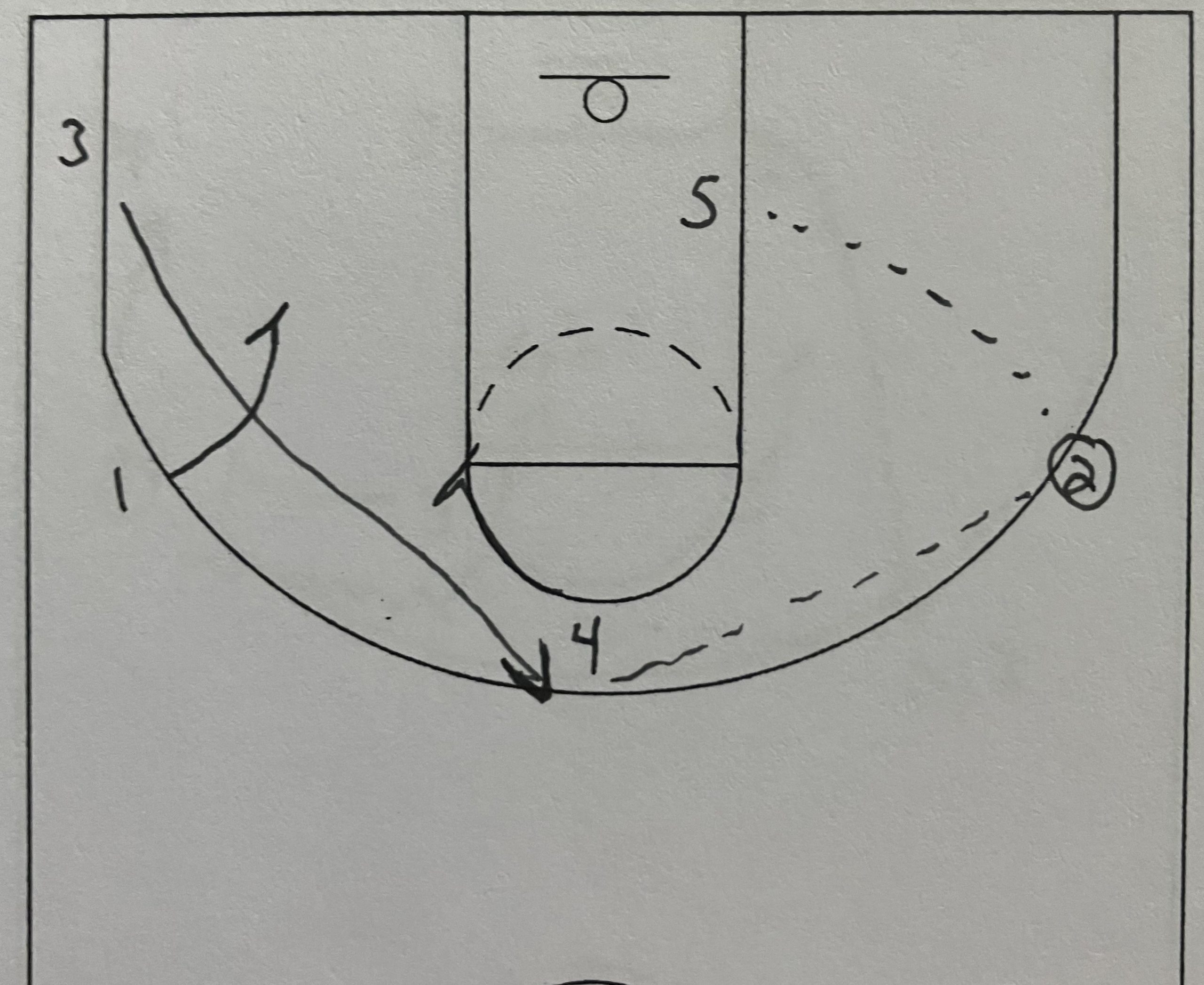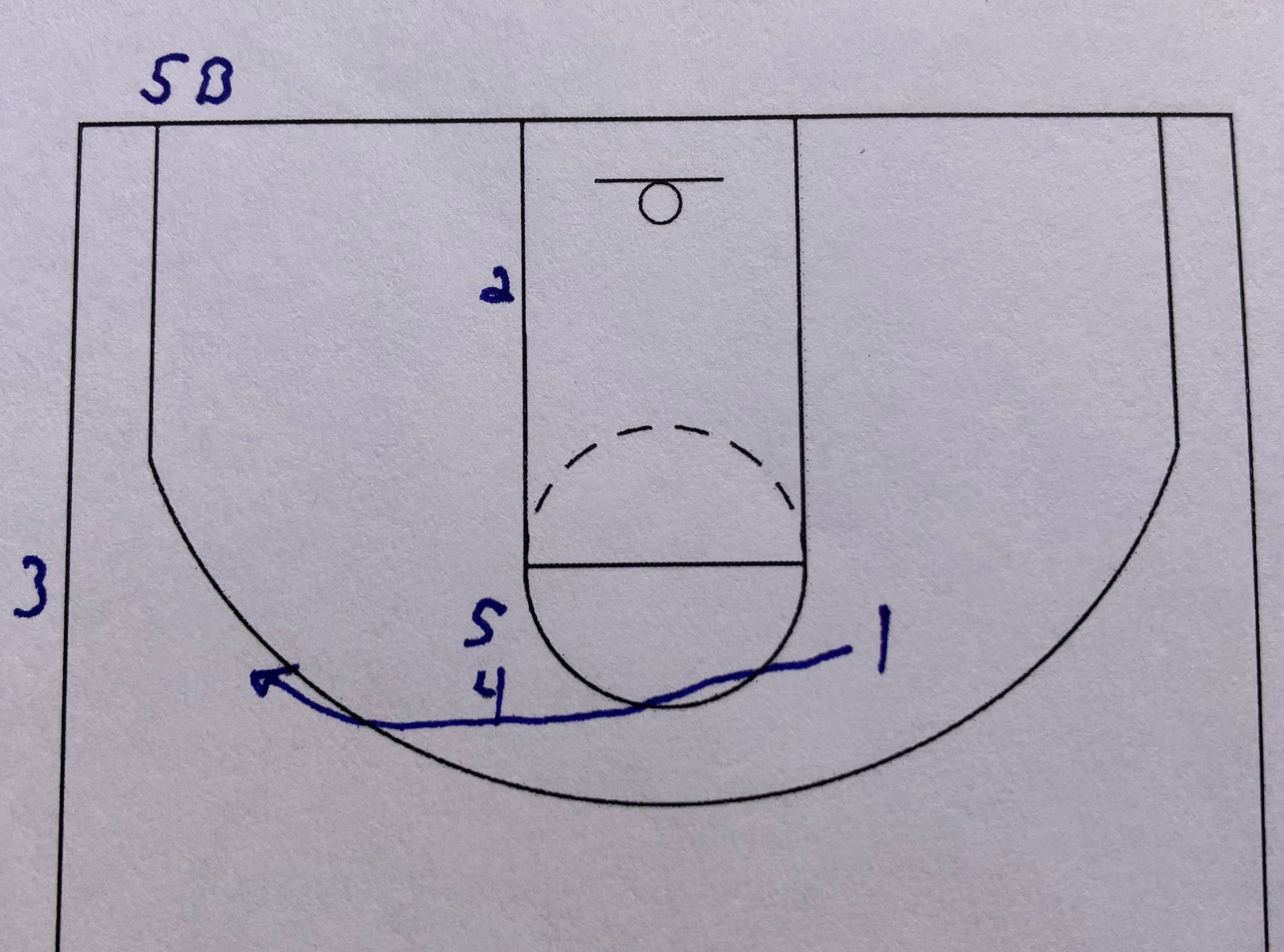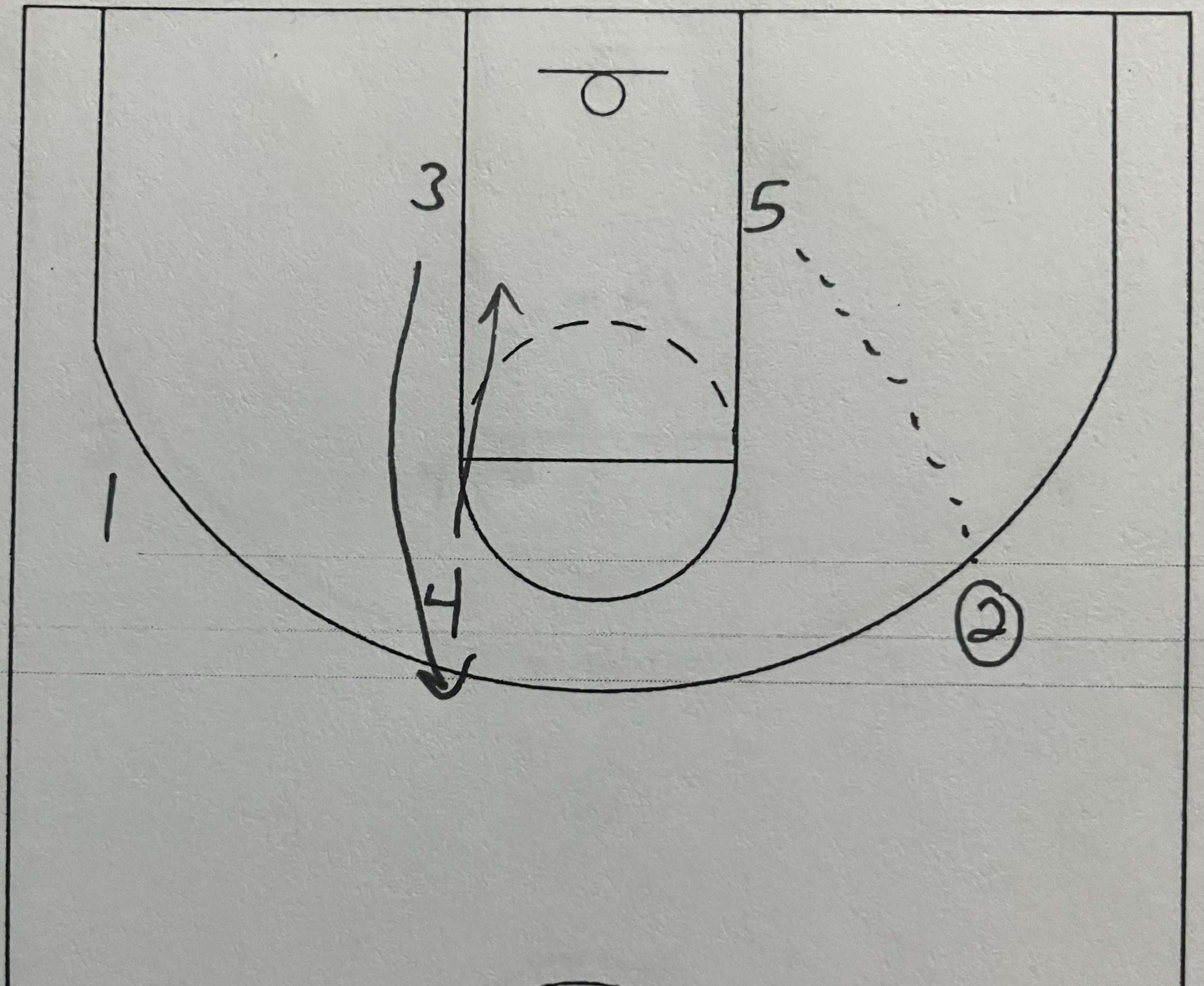I think just about every coach and every team has the BLOB play to get a player coming off of an in-screen going out to the corner for a corner three. A coach I was on staff with called it “America’s Play.” It is a simple play that can be ran from the youth levels all the way up to high school and beyond.
I am always looking for variations of the corner screen to get the same action with a shooter coming free off an in-screen. This means different setups. This could mean using the in-bounder, who is traditionally the player being screened for, as a decoy and running another player off of the baseline to get them open.
I saw this variation of the corner screen action in a college game and it is immediately going into the rotation of BLOB plays that I will use. Here is the diagrams and breakdown of the play.
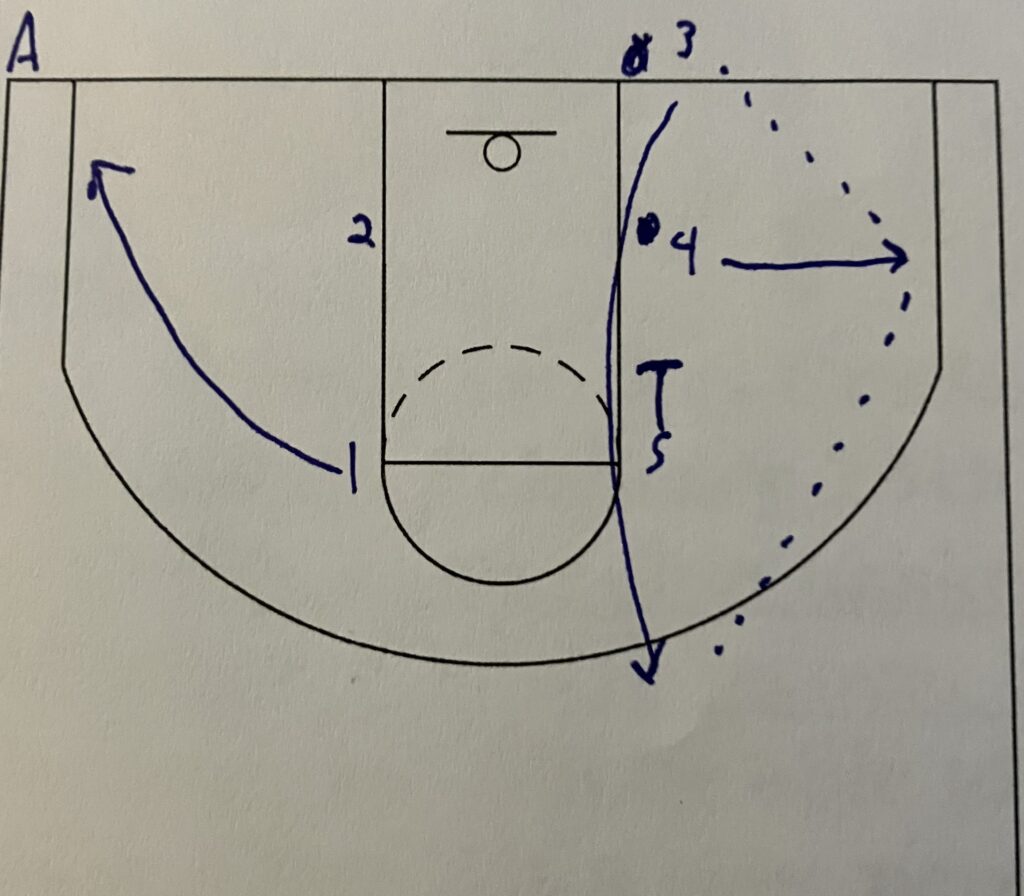
It starts in a standard box setup. The guards are on the backside while the post players are ballside. The ballside block player, in this case the big(4), cuts out to the corner and receives the entry pass from the forward(3).
The forward(3) then cuts up the lane using a screen by the center(5) to get open to get a return pass back from the big(4) to get the ball on the top of the court.
The point(1) in the backside elbow starting position runs down into the corner to flatten out the defense.
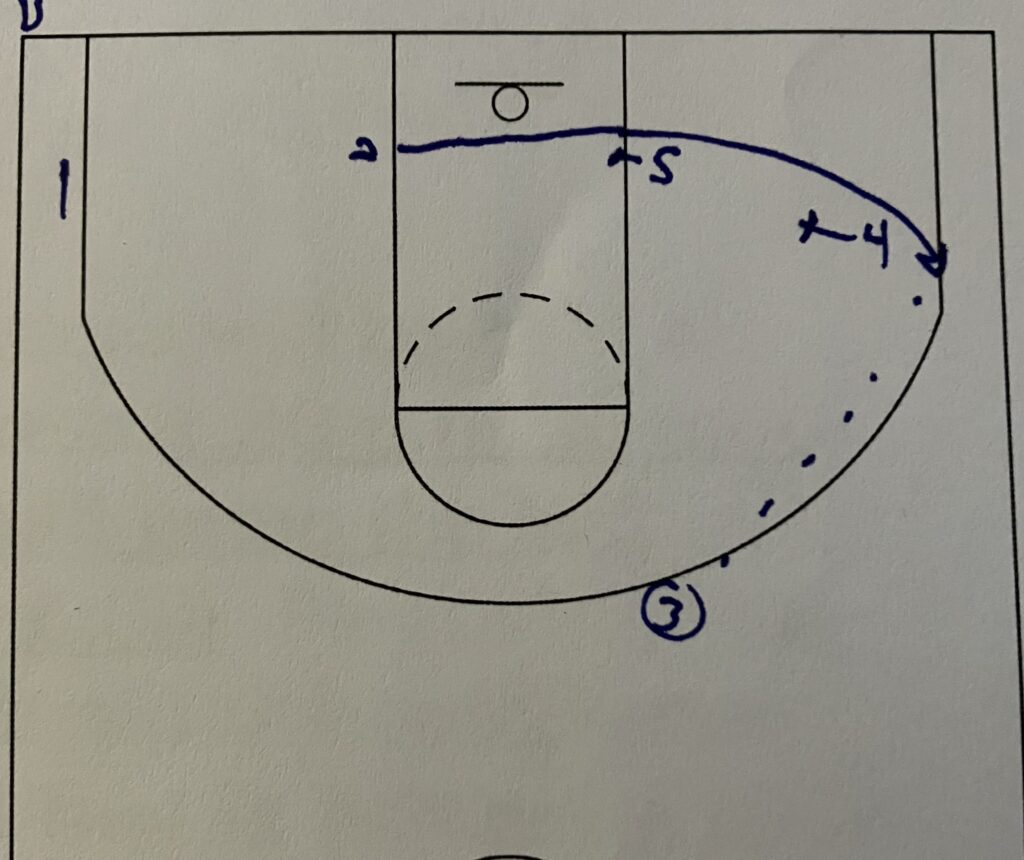
The center(5) is going to take a step or two down after screening for the forward(3) to get a good angle for the guard(2) to use the screen. The big(4) is moving into a good stagger screen position behind the center(5) after they pass the ball up to the forward(3).
The guard(2) is going to cut ballside using the stagger screen to get open. This will likely put the guard(2) on the wing and not in the corner. That little tweak in positioning should not matter at all.
The forward(3) makes the pass to the guard(2) for the open 3-point shot.
Variation 1
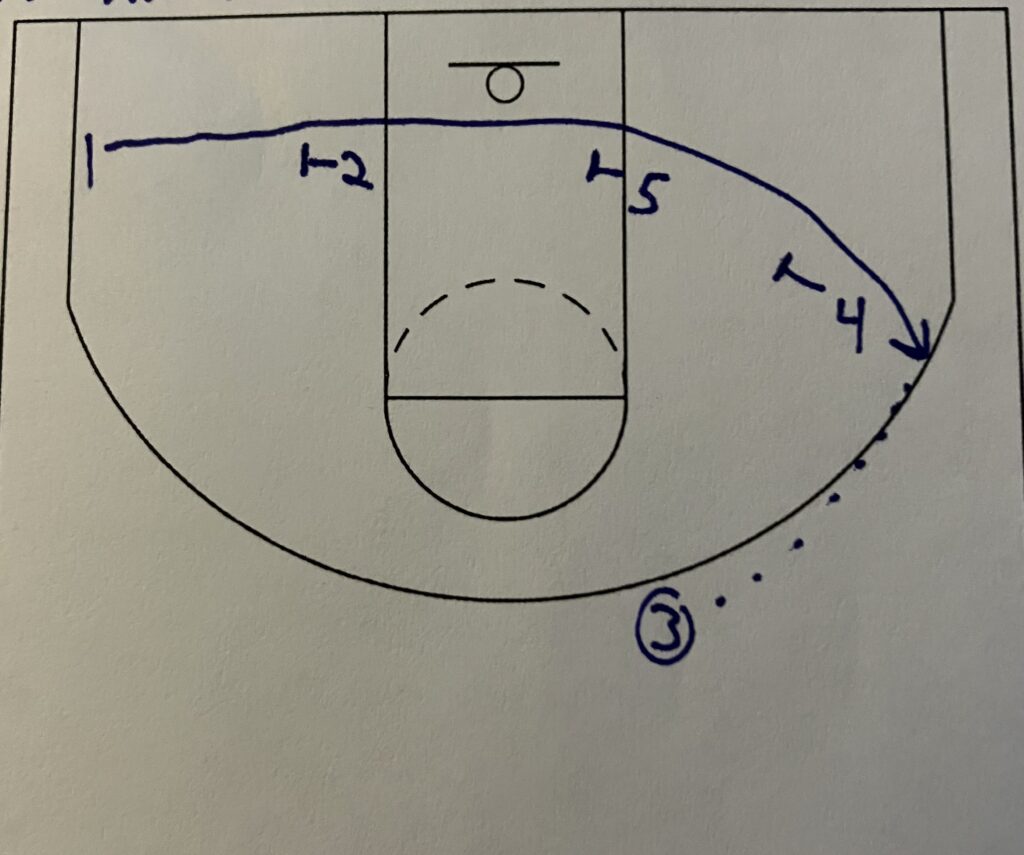
The first variation uses the same movements and setups but changes the last movements to get somebody else open. This is a great way to simplify a playbook with a lot of plays while keeping defenses guessing and off-balance.
Instead of the guard(2) coming off of the double screen, the point(1) is going to come from the opposite corner using all 3 players, guard(2), center(5), and forward(4), to create a triple stagger screen to get an open look at a 3-point shot.
This simple change gives the offense the ability to get 2 different people a shot in this play depending on who is having a better shooting night or who the team wants to be shooting the ball during the game.
Variation 2
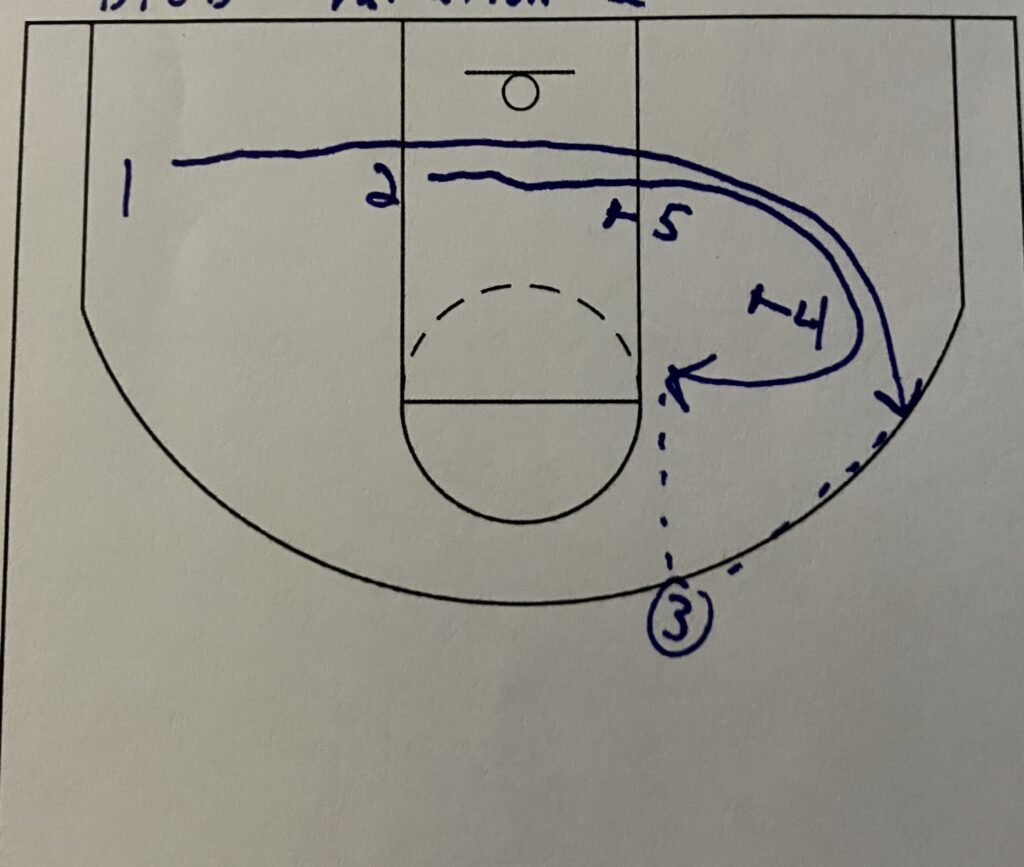
The 2nd variation is combining the double stagger screen of the original play with a curl cut off of the double screen as well.
If a team is able to get the guard(2) an open 3-pointer early in a game, then this variation can be used to play off of that make. Instead of the guard(2) running out to the 3-point line, they are going to curl cut off of the double screen. The hope is guard’s defender will see the same play as before and go running hard out to the 3-point line. As the guard(2) gets there, they cut hard back around to the basket hopefully for an easy catch and shoot from the lane or a layup.
The curl cut could also be a quasi-screen for the point(1) if the defense does not run out to the 3-point line with the guard(2). The point(1) is going to follow the guard(2) in this variation using the double screen as well. If the point’s defender either stays in the lane to help the curl cut or if they are going over the top of the double screen, then the defender could get caught up in all the bodies in the lane leaving the point(1) wide open on the wing coming off of the double screen.
This variation puts a lot of trust in the forward(3) to read the defense and make the right pass to either the guard(2) or point(1) to give the offense the best shot possible. This might be a case where the forward(3) is given a couple of keys to look for to know which pass is the right pass to make.
Conclusion
This BLOB play has 3 very good options to score off of the same movement and setup. This type of offensive strategy can help players remember the complete playbook. Some players at the high school level and below do not have the basketball IQ to remember a bunch of different plays. The ability to have 3 or 4 plays with the vast majority of the plays being the same can help those players remember all the plays without having to think very much.
Players who are having to think are not playing at their fastest. A simple playbook can help them retain all of the plays the team is using. But at the same time the playbook must be complex enough to keep the defense from knowing exactly what the offense is doing. These variations can be used if the defense starts to overplay the play. The ability to attack the defense with multiple players and slight adjustments in movement makes it very difficult for the defense to stop the offense.


